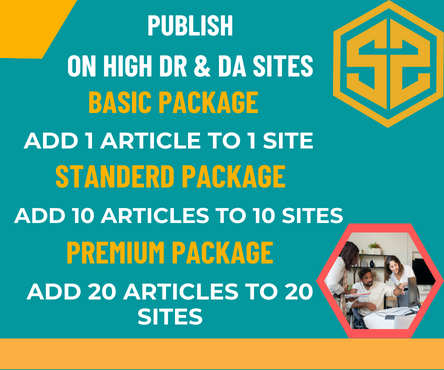Loans are money given to an individual, corporation, or government. The main idea behind taking out loans is to increase the money supply and serve as a source of revenue for the lenders. Different types of loans have different characteristics, such as secured and unsecured loans, open-end and closed-end loans, and conventional types. This article will provide you with some basic information about each type. Hopefully, this article will be useful to you in making your final decision.
Consolidation loans are unsecured personal loans
A debt consolidation loan can be a great way to reduce your monthly payments. However, you should consider a few important factors before making your decision. If you don’t have enough money to cover your monthly expenses, consolidating all your credit card debts can result in you getting into even more debt. In order to benefit from a debt consolidation loan, the interest rate and monthly payments must be low and you should be able to pay off the debt as quickly as possible.
A good way to find the best consolidation loan is to make a list of all your debts. Then, you can begin shopping for the right loan. After determining the amount you need to pay off your debts, the next step is to find a lender who will approve your application. Make sure to check on their eligibility requirements and make a few comparisons. While shopping for a debt consolidation loan, pay attention to the terms, interest rate, and origination fees. You should also pay attention to the APR and the length of repayment.
If you do decide to apply for a debt consolidation loan, you must first evaluate your financial situation. A simple two-question test will help you decide which loan is right for you. To determine whether a consolidation loan is right for you, your total monthly payments must be lower than the total cost of paying higher interest rates or implementing a debt management program. A debt consolidation loan must also be cheaper than a debt management plan, so make sure you do your homework before you apply for a loan.
While unsecured personal loans are easier to get, they are more expensive to apply for. Some lenders require collateral in order to approve a loan. Having collateral puts your home or car at risk if you do not pay your debts. Taking out a secured personal loan is a better option if you have good credit and are looking to consolidate your debts. There are benefits to both types of debt consolidation loans, but it depends on your situation and what you need.

Revolving loans are fixed-rate, fixed-payment loans
A revolving loan is a type of credit that has a variable interest rate and no set amount owed. It can be used for many different purposes. The repayment amount and interest rate are generally set by the lender and depend on the balance that the borrower has each month. The advantage of a revolving line of credit is that you can buy anything you want without worrying about exceeding your limit. However, it is important to remember that you must pay at least the minimum amount due each month.
Revolving loans are often a better option for businesses than revolving credit facilities. For a one-time purchase, a term loan might be the best option. If you need access to funds over a longer period, a revolving credit facility may be the best option. As long as you understand the differences between the two, you can find the right type of business loan for your needs.
Home equity lines of credit are another type of revolving loan. The principal amount of the loan is secured against your home. You can access the money on a regular basis using a credit card, a check or a wire transfer. The funds in a revolving line of credit account only accrue interest when you use them, so this type of credit is the best option for large purchases.
Revolving credit cards are convenient when you need money fast, but can have higher interest rates than installment debts. Similarly, credit cards are an easy way to manage your spending, but they come with variable interest rates. While they are convenient, they can also have rewards programs. It is also important to be sure to pay off credit cards each month. These offers can be very helpful during emergencies or when you need cash quickly.
Key person insurance is a condition of loan application
Many lenders require that businesses purchase key person insurance before they can approve a loan application. A policy covering a key employee can save a company from financial damage if he or she dies unexpectedly. It is also an excellent way for partners in a partnership to protect their shares if one partner were to die. Key person insurance does not have a set formula, but the coverage limits should reflect the potential financial losses that would be caused if a key person were to pass away unexpectedly.
If your company does not have the funds to reimburse the premiums, you can get a small business loan by purchasing key person insurance. The premiums are tax-deductible, but the cash value accumulates in a permanent policy, allowing it to compound interest over time. The monetary value of a policy is often used as collateral for a loan application. Furthermore, the death benefit from the policy is usually tax-free depending on the amount of the policy.
Many businesses use key person insurance policy loans to supplement compensation plans. This type of loan requires no collateral because the policy itself is the asset. The company may choose to purchase more coverage than it needs and split the death benefits with the key person’s family. Additionally, many companies assign ownership of the policy to the key person once they reach a predetermined age. This is a great way to make sure that the company can pay off its loans if their key person dies unexpectedly.
Most companies rely on loan applications to expand and survive. This is one of the reasons that lenders require businesses to purchase key person life insurance on their key employees. If a key person dies unexpectedly, the company can use the money from the insurance policy to hire a temporary or permanent replacement. This type of insurance can also be used as collateral for business loans or even put toward partnership interests and shareholdings.
Early payoff penalties
You have probably noticed prepayment penalties when you receive your loan documents. Prepayment penalties are fees you must pay to the lender if you choose to pay off your loan early. These penalties are calculated as a percentage of the outstanding balance. They are always clearly stated in the loan documents, but some lenders may try to disguise them to trick you into paying more. Most prepayment penalties are around 2% of the outstanding balance, and decrease over time.
While lenders may try to hide this fee in the small print of the loan documents, you must still pay attention to it. While it may seem counterintuitive, it is not unusual for lenders to hide this clause in the addendum to the Note. In any event, it is important to read the loan documents very carefully before agreeing to it. By reading the loan documents, you can avoid any unpleasant surprises later. It is also important to negotiate with the lender about a reasonable penalty fee, if any.
Early payoff penalties for loans have two major problems. While many lenders say these penalties help their bottom line by cutting interest rates, there are several that should be avoided. For example, a bank might charge you $500 for prepaying your HELOC within three years. These penalties are not as severe as they might seem, but they are still significant enough to make borrowers pay the additional fees. This is especially true if the penalties are a percentage of the loan balance.
If you are worried about paying off your loan too early, the best way to avoid prepayment penalties is to read the contract carefully. Most personal loans will have some prepayment penalties, but many do not. These are especially common when it comes to auto loans, so it is worth looking around for the lender that has the lowest prepayment penalties. There are also state-chartered credit unions that do not have prepayment penalties. This means you can avoid a prepayment penalty by choosing a lender that charges a low interest rate.
Interest rates
Interest rates on loans are a component of the cost of a loan. These rates are based on a percentage of the principal, which is the money that is loaned. These rates change year-round, and depend on the type of loan and the term of the loan. Some lenders offer fixed interest rates, while others charge market-linked rates. Regardless of the type of loan, it is important to understand interest rates and how they affect the cost of your loan.
There are two main types of interest rates: nominal and compound. The former is based on the real value of money, while the latter takes inflation into account. Nominal interest, therefore, means you’ll pay the same amount regardless of inflation. It can also refer to the interest rate set by the Federal Reserve, or the interest rate you pay before fees. To understand how interest rates are calculated, use an Interest Rate Calculator. The fixed rate is the best option for most borrowers.
A higher interest rate means you’ll pay more over time. In general, a lower interest rate will save you money in the long run. This is because lenders need to earn a profit from their loan products, and interest rates are what allow them to maintain liquidity. However, too-low interest rates may also increase inflation, which is bad for the economy. Thus, it is important to understand the difference between an interest rate and an APR when applying for a loan.
While many people are skeptical about the Federal Reserve’s role in setting interest rates, the fact is that a large percentage of these rates are based on the individual credit standing of an individual. Secured loans tend to have lower interest rates than unsecured loans, and they require collateral to secure the loan. Hence, if you’re planning to take out a car loan, the interest rate of the loan will be higher than that of an unsecured one.

